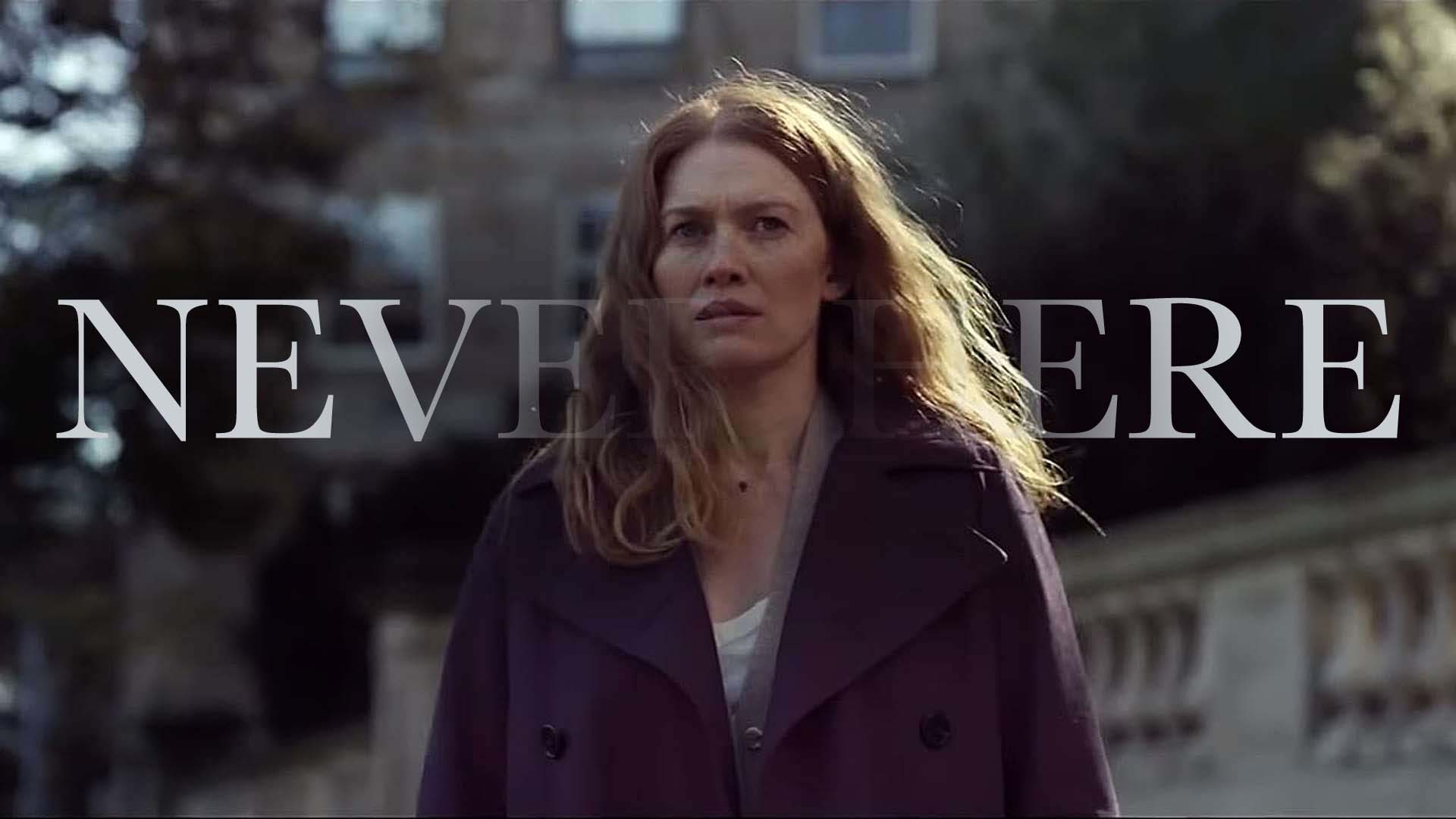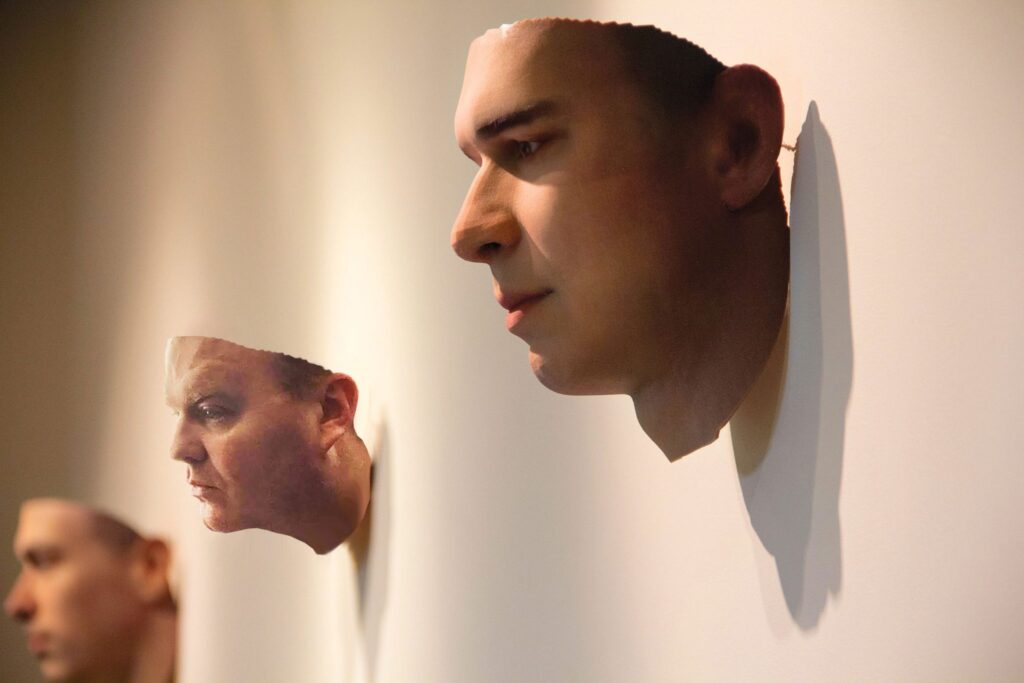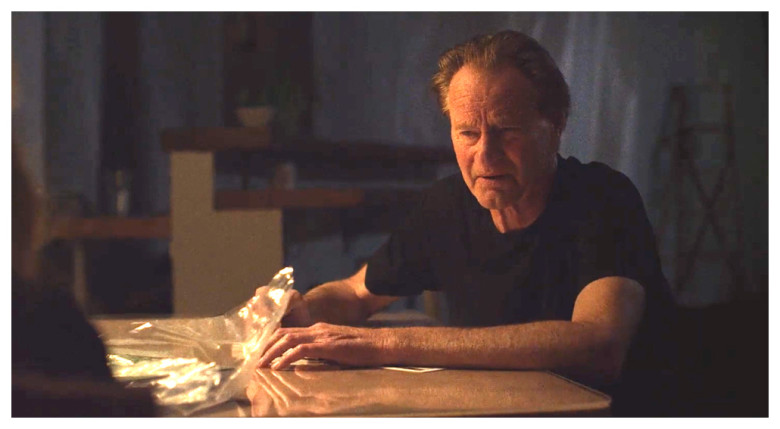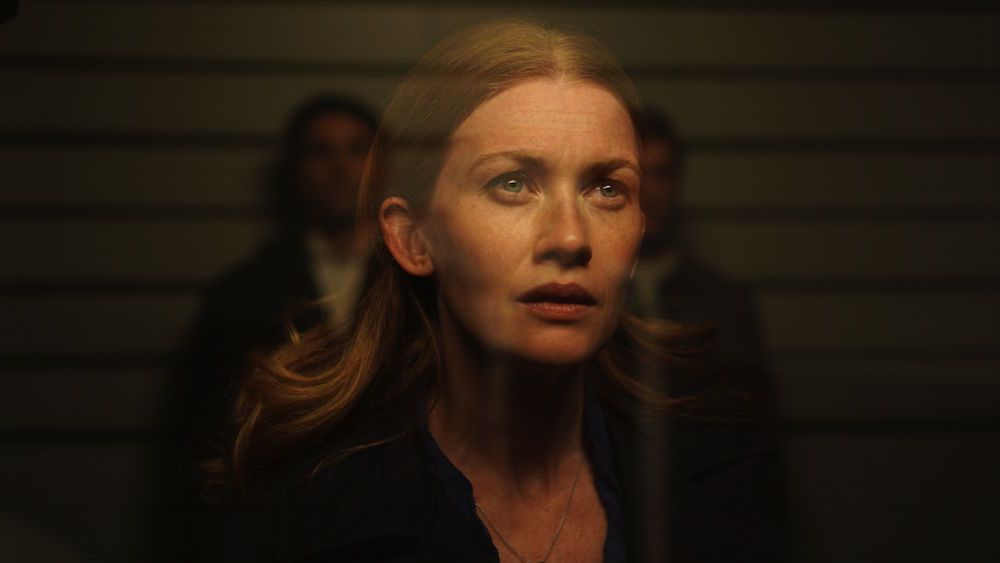Three Theories to Explain the Movie Never Here
I so want to absolutely love this movie. And maybe I will – RIGHT AFTER we talk about it. Maybe. But it’s definitely going to require you and me figuring this thing out. Because right now? I am so incredibly lost. But I’m getting ahead of myself.
Here at THiNC. we love talking about ourselves in third person plural, and also discussing really really complicated movies. We love movies that make us go HUH? and cause us to watch the movie over again from the beginning. We love throwing out asinine theories that make psychologists wonder about our collective sanities. Seriously. There literally is nothing better than a really mind blowing movie, or a totally deep movie that causes us all to stop and catch our breath, and go woah. Movies like Incendies? Movies like Sicario, If There’s a Hell Below. The Invitation. Time Crimes… etc etc. Or a million other movies like it. All eschew away from the standard Hollywood fare that seems to only churn out baby food set to über pureed. (If you puree baby food, what the heck do you end up with? Beet flavored punch? Blech.)
Anyway, so now that you know who you are dealing with here. But if I love mind job movies, why is this confusing movie so not in my bailiwick? Well, I think we’ll get to that below, but for those of you who haven’t seen the movie yet, maybe you should check out this trailer first, and then decide from there?
What’s super funny about this movie is that I have interviewed someone almost exactly like Miranda Fall… a real performance artist that has done really invasive art in this sort of space. Heather Dewey-Hagborg is an artist that has taken found items, and the extracted the DNA off of it, and then made facial reconstructions based on the DNA. So think litter… trash. A coffee cup. A condom… yeah. And then she does this:
I know, right? Gah. Super super complicated. (And yeah, that’s me in the middle there. Heheh.) Other performance artists I know do even more controversial things. But let’s just stay on target here. Performance artists are exploitative. They manipulate, and the drop shock and awe on the viewer in order to elicit an emotion. Right? And that is what happens here in this movie. So yeah, we are here to discuss Never Here. Right? So, if you haven’t seen the film yet, please don’t read any further. Because we will be peeling back the layers of this movie in an effort to understand it.
From here on out… HERE BE SPOILERS… please avert your eyes.
Never Here Movie Discussion
To be clear, the only reason I do a quick walk through of the movie details is so that we are all on the same page. If I miss something or get something wrong, I definitely need you to keep me on the right page. So let’s see if we can get the details of the mechanics of the movie right before we dive a layer deeper to the how’s and the whys.
The movie opens with Miranda Fall (ok, what is up with that protagonist’s name? We are going to have to come back to that later on) at her latest exhibit. The exhibit is focused around Arthur Anderton, who unwittingly lost his phone and then all of his photos, his contacts, his life ends up on the gallery walls as “art”. And as I mentioned before Arthur never was asked for his permission, it just happened.
And so when Arthur arrives at the exhibit, there was a frisson that runs through the people there. What is going to happen? How will this go. But ultimately Arthur tells Miranda, “You’ve done a very bad thing.” and then leaves. Soon after the exhibit opening, Miranda is interviewed by Margaret Lockwood and she then departs. We then learn that Paul Stark (played by the now deceased Sam Shepherd) – who is Miranda’s agent and professional partner – is sleeping with Miranda. And while at her apartment, a strange encounter unfolds and begins a downward spiral for the rest of the movie.
Miranda heads into the other room, and when she does, her phone rings, and Paul answers. And when he does, he sees someone in the street attacking attacking Margaret and pounding her face into the street. Paul yells, and the attack stops. Immediately Miranda wants to call the police. But the only glitch? Paul is married and can’t possibly be there. So, Paul tells Miranda what he looked like and all the details about the attack, and then Miranda goes to the police, telling them that she is the one that saw the attack.
One of the notes I wrote while watching the movie was “echoes of repetition of echoes of repetition of echoes” you get the idea. It’s at this point that the movie starts playing a lot of repetition of repetitions as a way to sort of confuse and dissolve the narrative, to confuse the facts, and to complicate the storyline intentionally. Miranda helps the police with a sketch of the perpetrator (that others mistake as being Miranda later) and also tries to pick the perpetrator out of a lineup. But it is during this lineup that Miranda fixates on person #5. “He’s familiar, but not from the attack.”
Soon after the lineup, the gallery is attacked. The art is stolen. Things are destroyed. Spray paint litters the walls. And it is immediately assumed that Arthur is the one that attacked the art gallery. And, in a stroke of meta-art, post-near-ironic-period, Miranda decides to leave the gallery just as it is. To allow attendees to continue coming. And to keep on with the exhibit as some sort of art within an art sort of message to the visitors.
It is when she discovers the location of Man #5 that a new art project begins. Miranda starts to voyeuristically stalk Man#5 and to learn more and more about his comings and goings. She names him S and tracks him to and from his apartment. She even goes so far as to go into his apartment, which gives her pause because S keeps a key under his mat just like she does. Is she chasing herself? Is she voyeuristically following herself following herself? You see, this movie is confusing in a meta-confusing, not obvious confusing sort of a way.
And in the middle of all this Miranda reconnects with this old friend from the police force who reintroduces himself to her. And the two of them re-hit it off. They apparently knew each other in college? And eventually, this cop friend of Miranda’s lets her know that the police actually find the perpetrator of the attack on Margaret, and there is great sighing throughout the theater, because we were confused how she could have possibly positively identified anyone after having not seen anyone!
But during all of these fairly strange, yet voyeuristically interesting things are happening, that we start to get a sense that Miranda isn’t well. Her dog becomes ill. She loses track of herself. She thinks she’s been sitting in one place for hours when in fact she couldn’t possibly have been. Right? The gun her police friend left for a different exhibit, looks to have been fired? She is obsessing about Man#5, but is also becoming so paranoid that S is entering her apartment. But of course, she can’t call the police, because, well, that would be fairly contradictory wouldn’t it? To do that to him, but not allow him to do that to her? She watches S buy a scarf only to have the scarf show up in her dresser days later? She isn’t doing well. Or, maybe someone is reverse messing with her? Who knows.
And eventually, Miranda reconnects with Margaret, the attack victim and admits that she actually wasn’t the one that saw the attack. It was actually Paul that saw it. Margaret flips out, but then tells Miranda that Arthur Anderton attempted suicide by shooting himself. He’s in the hospital as a result. And our cop friend (whom I can’t be bothered to look up his name for, but at this point, I’m betting his name was Rick Boulders or something horrible, alright, I looked it up. Chill out. His name is Andy Williams) soon let’s Amanda know that they actually didn’t find the right person for the attack, that it was a coerced confession and Margaret has been abducted. About the same time Paul Boulders, I mean Stark, goes missing as well.
But the Andy Williams makes it clear that Miranda shouldn’t be too worried because he’s sure that Paul just left town to blow off steam. Apparently people do this all the time. The just walk away from everything, buy a plane ticket, and just never come back. Only to be found years later. Right? ***FORESHADOWING ALERT PEOPLE PAY ATTENTION*** And sure enough, as things get more and more complicated and confused, she heads into S’s apartment and is caught. It turns out that S is actually a policeman just posing as a possible suspect (possibly?) and she has been tracking and obsessing with this cop that she had no real idea about.
And as the cop, S, has her, and has called the police for backup, she cracks him on the head and flees. And in a split second decision she gets in a taxi and heads to the airport.
The End.
What Did I just Watch With This Never Hear Movie?
With most movies, the unlock pretty early on for me. The foreshadowing, the hints, are all really really obvious. And its actually a pretty annoying trait to some. I was watching Stranger Things 1 and 2 with a buddy who was determined to make me watch it, and he is pretty exasperated with me calling out where the characters are going, the direction of the story etc. He’d prefer me to just watch and just experience it. But that’s not how I roll.
But with this movie, I literally got nothing. And yet, I having nothing, I think I have an idea or two that that actually might be intentional. Which, really means, I might actually grasp the movie more than I realize I do. And you may too. But in order to walk back through the movie and our possibilities, why don’t I throw some ideas out, in order to detail a few of our better options for what this movie might possibly mean.
Never Here Movie Theory 1 – Miranda’s Just Insane
Occam’s razor states that when given competing hypothetical answers, we should choose the answer that makes the fewest assumptions. And that particular solution to this movie is easy enough to arrive to, Miranda is just insane. Miranda happens to be an artist with a voyeuristic streak, and she also is just unraveling sanity-wise. There isn’t much more to it. She fixates on people and in so doing she loses track of everyone else. And that’s that. The problem with this theory is that it might be true, and it also might not be specific a clinical diagnosis to really explain the particular insanity that makes this movie hold together from the outside in. If you know what I mean. Did S exist? What about Arthur? Is she truly an artist even? What is even real?
Never Here Movie Theory 2 – Miranda is S
One of the things that came to me as a solution to this movie quite early on when the echoing was occurring at the start? Was that she is actually most fixated with her self. And I wondered, could it be that Miranda was going off the specific deep end and following clues that she left for herself. She tracked herself to an apartment that she created for herself to find. Right? This isn’t an original idea to me, this is a page straight out of the Primer playbook.
But then if that is the case, we have a cop at the end that is turning to face her. We have an actor named named Goran Visnjic that is playing this specific part. But do we really know if he is actually S? Could it be that Miranda is S and the cop just saw her breaking and entering? Maybe she really is voyeuristically chasing after her own clues that she has left for herself? Not a really bad theory – I’ve had worse.
Never Here Movie Theory 3 – Its a Morality Tale
Or, what if there is nothing happening in this movie? What if the various chaoses that are happening are just a result of the idiocy of Miranda’s life choice to play this voyeuristic game? For example, could we surmise that Heather Dewey-Hagborg, that I talked about at the top… the performance artist creating faces from found DNA, that she has problems like this just because of her own choice of art. For example, I know for a fact that in Korea (Japan?) Heather was a part of a public shaming campaign to get people to stop littering. (Learn more about it here.) And what if one of her shaming targets decided to play her game back her direction? Hacking her information and releasing it? That would be a natural result of her own “art”, right?
Similarly, what if nothing happened here that was very conspiratorial. Someone attacked her art gallery because they didn’t like her “art”? And what if Margaret was attacked in a random act of violence. And what if the rest of the movie is just a morality tale warning of the dangers of releasing too much data on the interwebs? What if this movie really is a nothing? Literally, nothing happened? And she gets caught following someone?
Then the movie is about her own narcissism and her own fixation with herself. And could it be that this miasma, this unintelligible deluge of random paranoia is actually a warning?
My Own Favorite Theory Explaining Never Here
Personally, I think theory #3 is way way too preachy for my liking. I actually think it is the correct lens to view the movie through. I believe that this is what Camille Thoman may have intended for us to take from the movie. And oh by the way, did I mention that Camille (the screenplay writer and director of the movie) is a performance artist herself? Yeah. So there’s that.
But I do not like it. It’s too simple an explanation. Action/Reaction. And doesn’t make for a good movie.
Personally, my favorite explanation for this movie is that S never exists. We never see “him” in the line up. Better yet, did you notice the noticeably masculine clothing she was wearing before she headed up into the apartment? Did that not strike you as intriguing? She is chasing after herself. And in that chasing, it’s a definition of her own madness. This Narcissism is also a definition of our own psychosis. Our Instagram fascination. Our Facebook fascination. Which, has nothing to do with your 1200 friends or your community you “want to stay in touch with”. But rather your own desire for affirmation. Likes. Views. Approvals. Right?
I don’t know. What do you think of the movie. I haven’t found a single person online talking about the possible meanings of this movie. No rumblings of it’s possible deeper message. Which makes the movie all the more interesting to me.






